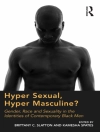As people of the modern era were singularly prone to nervous disorders, the nervous system became a model for describing political and social organization. This volume untangles the mutual dependencies of scientific neurology and the cultural attitudes of the period 1800-1950, exploring how and why modernity was a fundamentally nervous state.
Содержание
List of Figures Acknowledgments Notes on Contributors Introduction; L.Salisbury & A.Shail Beyond the Brain: Sceptical and Satirical Responses to Gall’s Organology; M.K.House Neurology and the Invention of Menstruation; A.Shail Carlyle’s Nervous Dyspepsia: Nervousness, Indigestion and the Experience of Modernity in Nineteenth-Century Britain; H.Ishizuka Railway Spine, Nervous Excess, and the Forensic Self; J.F.Thrailkill ‘The Conviction of its Existence:’ Silas Weir Mitchell, Phantom Limbs and Phantom Bodies in Neurology and Spiritualism; A.Satz Modernism and the Two Paranoias: The Neurology of Persecution; G.Rousseau ‘Nerve-Vibration’: Therapeutic Technologies in the 1880s and 1890s; S.Trower From Daniel Paul Schreber through the Dr. Phil Family: Modernity, Neurology and the Cult of the Case Study Superstar; M.A.Tata ‘I guess I’m just nervous, then’: Neuropathology and Edith Wharton’s Exploration of Interior Geographies; V.Plock Sounds of Silence: Aphasiology and the Subject of Modernity; L.Salisbury Shell Shock as a Self-Inflicted Wound, 1915-1921; J.Meyer Modernity and the Peristaltic Subject; J.Walton Matter for Thought: The Psychon in Neurology, Psychology and American Culture, 1927-1943; M.Littlefield
Об авторе
LAURA SALISBURY is RCUK Fellow in Science, Technology, and Culture and a Lecturer at Birkbeck, University of London. She has published various articles on Samuel Beckett, including one on his ‘aphasic’ modernism. She is currently writing a book on
Late Modernisms for Edinburgh University Press and researching a study of the relationships between modernism, modernity and neurological conceptions of language.
ANDREW SHAIL News International Research Fellow in Film at St Anne’s College, University of Oxford. He is co-editor of
Menstruation: A Cultural History (with Gillian Howie, Palgrave, 2005), and editor of
Reading the Cinematograph: The Cinema in British Short Fiction 1896-1912 (University of Exeter Press, 2010), and co-author, with Bob Stoate, of a BFI Film Classic on
Back to the Future (2010).












